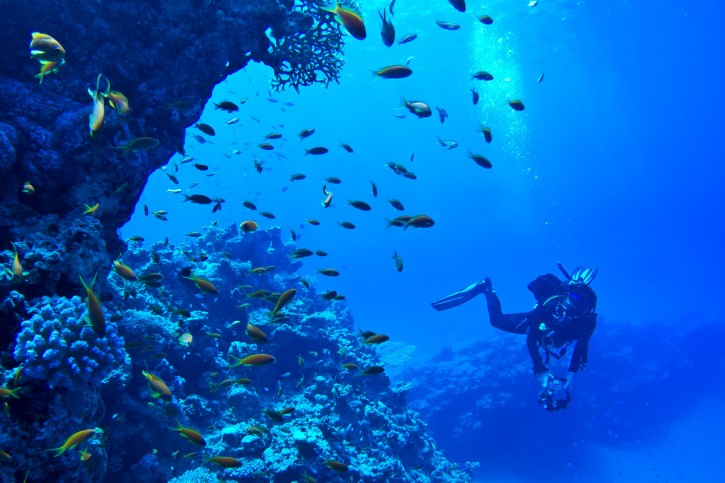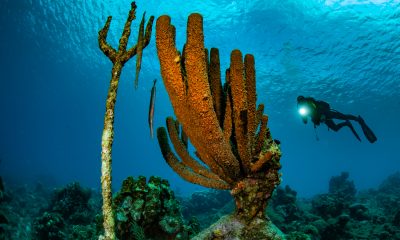Photo / Video News & Reviews
Duxy’s Underwater Photography Blog: Available Light, Part 4
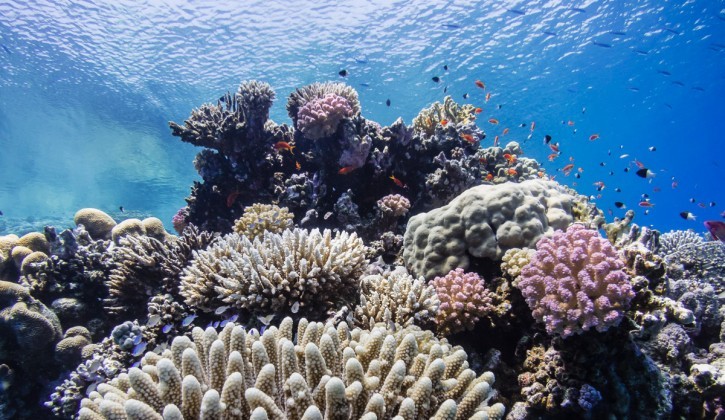
This is the final part in our series on shooting in available light. Part one was all about shooting with wide angle lenses; part two covered Custom White Balance; and part 3 was about the pitfalls and problems of shooting with Custom White Balance.
For the fourth and final instalment I am going to cover all of the extra bits and little things that don’t fall into the earlier sections.
So we are going to look at colour correction using filters and also colour correcting after the fact when you are shooting on a camera that produces RAW files.
Processing wreck shots, and whether or not to go black and white.
And is it possible to shoot available light macro?
Correction Filters and the Underwater Mode
Some cameras don’t have quick and easy to use Custom White Balance controls, which can put folks off. And they often want a one stop solution.
In days of yore, (and tbh sometimes these days too) with some cameras you had no option but to use a filter, which is normally of a reddish magenta colour, to restore colour balance to your underwater shots. And they work fine as long as you understand that they only really work within a very narrow band of depth, typically around 8-12m. This is because as explained in our earlier white balancing blog, our colours are diminished progressively as we get deeper, so any fixed method of colour correction such as a filter is really only going to work efficiently at one depth. And we would need a collection of filters of variable intensity as we got deeper, which is impractical to say the least.
To be honest, unless there is absolutely no alternative with your camera (GoPro’s and other cameras of this type fall into this category), I would steer away from conventional colour correction filters because they also steal quite a bit of light from you. Or as in the cases below only shoot with them really shallow – no deeper than around 8m – for the best results.
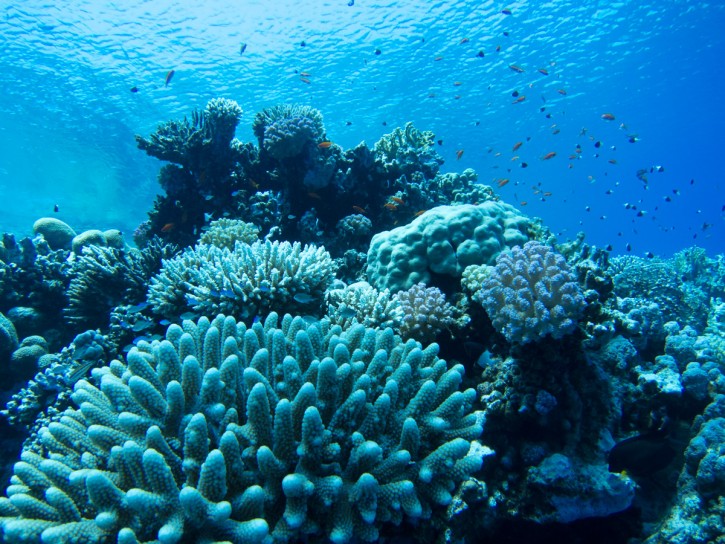
A classic reef scene that could be taken with any camera from a GoPro upwards. This is unfiltered and what a lot of people experience when first shooting underwater.
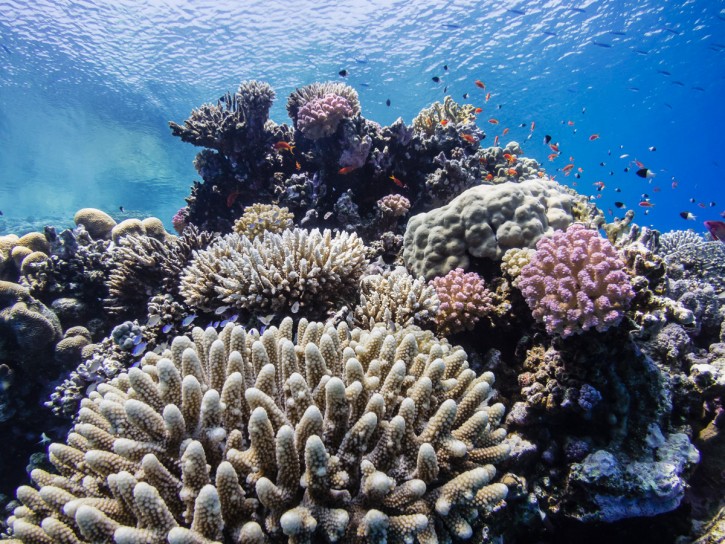
Here the same shot as previous, but this time I’ve used a colour correction filter to restore the colours. Note however that I am very shallow and this is where these filters work best.
Some cameras have a dedicated underwater mode, but this is usually little more than an electronic version of a coloured filter and doesn’t always do much, but of late I’ve seen some more promising offerings of this sort of thing from Canon and Olympus.
Here’s a video I shot using the underwater mode on an Olympus Mirrorless camera, an EM5:
https://www.youtube.com/watch?v=Ulat1Z6L0qk
Shooting in the RAW
Probably the very best way to colour correct your pictures, even if you have the option of custom white balance, is if your camera will allow you to shoot RAW files.
Now if you are not sure, the chances are that your camera won’t, as the ability to shoot RAW will be something you will probably have looked at when buying a camera, and also the salesman will have made a big deal out of it, because it is a big deal. So you know what to ask for when you purchase your next camera.
RAW files are simply the actual data recorded at the sensor and are not processed into a jpeg file within the camera.
The means that you can have full control after you’ve taken your shots to process the pictures yourself, and really fine tune things like colour correction, white balance and even exposure to a lesser degree. This processing you would do within a program like Adobe Photoshop or Adobe Lightroom, and this is why things like RAW shooting are available to people with high end compact cameras or Mirrorless and DSLR shooters.
It’s nothing to be intimidated about and processing RAW files is a relatively easy task, and is also quite fun too. A bit like the modern equivalent of having a home darkroom, but without the dangerous chemicals and fumbling around in the dark!
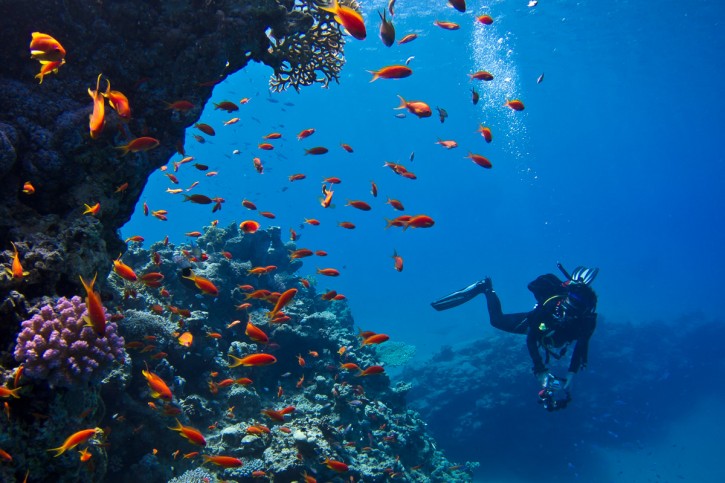
After colour correction within Adobe Lightroom, the RAW file has allowed me to completely restore the colours, but beware – this won’t work miracles, and at depths greater than 12m, it has less usefulness, and maybe using a strobe would be better.
Macro Photography in Available Light
Underwater macro or close up photography is often thought to be only practical if you use extra lighting of some kind. If you encounter subjects that are in good light like the Hawkfish below, then there is no reason as long as your shutter speeds and apertures of your camera will allow to shoot with what the sun is providing for you. This can often be simpler and produce more naturalistic results.
So keep an eye on what your camera is telling you, and if the camera shake warning is flashing then you may need to up your ISO’s to provide a suitable shutter speed to hand hold. On that note hand holding close up shots is more tricky than wide angle so you may need to pick (or force shutter speeds with a higher ISO) than you could get away with with a wider lens. I try and keep above 1/250 of a second if shooting like this.
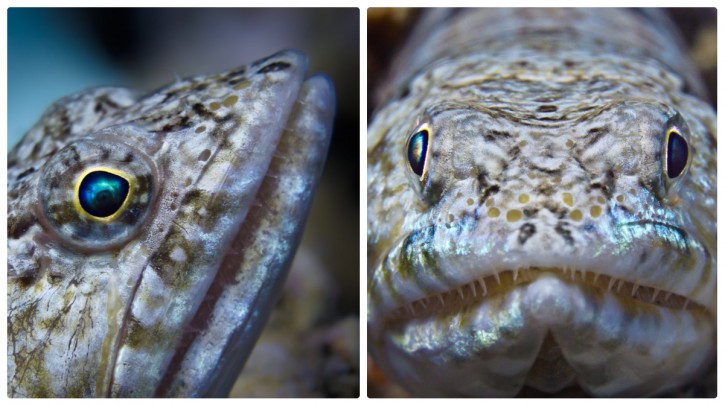
This Lizard fish is about as close as you could expect to shoot successfully without a strobe. These guys are often in very shallow water, laying on bright well lit sand, so are a very suitable subject for available light macro photography.
Fish portraiture like this is perfectly achievable using available light, and allows you to capture the subject exactly as you see it. The things you need to watch out for are that your shutter speeds are sufficiently high enough to hand hold your camera set up, because in macro mode you may also be zoomed in slightly so any movements you make will be magnified. These two shots below were typical examples of pictures where I wanted to get the shot exactly as I was seeing it, and whilst the Crocodile Fish is only just qualified to be called a macro picture, everything I’ve said above applies.
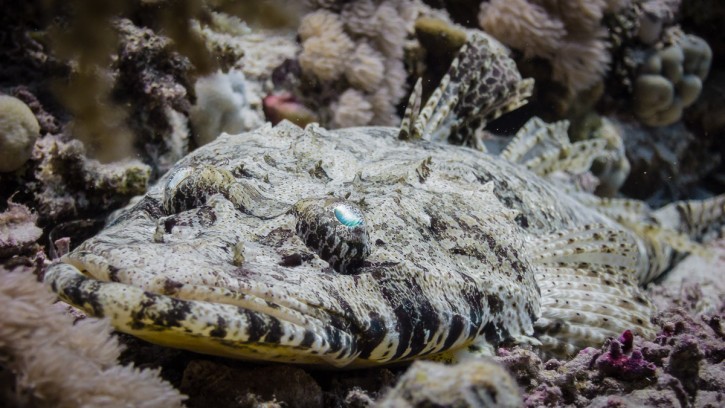
Fish Portraits like the ones here shot using compact cameras and underwater white balance, or RAW files, is very possible in very bright light conditions.
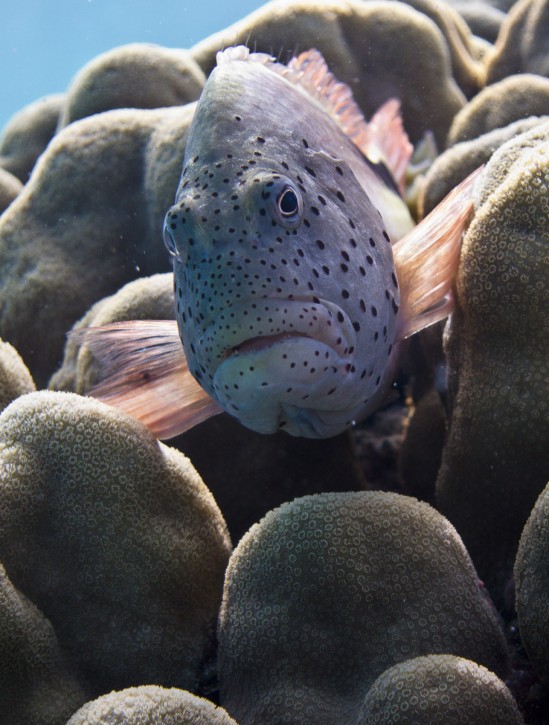
Macro Photography is normally the preserve of someone shooting with strobes only, but as long as you are in good light Macro photography is possible.
Available light wreck shooting
A very popular subject for available light shooting is to shoot big expansive wreck photographs, and often shooting available light is the only way possible to light such a large object, because even with the most powerful strobes it would be nigh on impossible to completely illuminate a large subject like a wreck. Unless the light conditions are in your favour, and the wreck is positioned so that the sun is directly illuminating it, when you want to shoot it, then getting your colours correct will depend hugely on all these variables. Just one of the reasons why people often choose to turn their wreck photographs to black and white – this not only heightens the drama and mood but is often the only get out clause to avoid weird colours, because the conditions are not in your favour.
For the stern shot of the Thistlegorm, I have actually used a little bit of flash, but it has only slightly lightened the very closest part of the wreck, and lifted it a little. To all intents and purposes the shot is being mostly illuminated by the late afternoon sunlight.
So I will leave it up to you which you prefer, the straight shot or the black and white toned version below it:
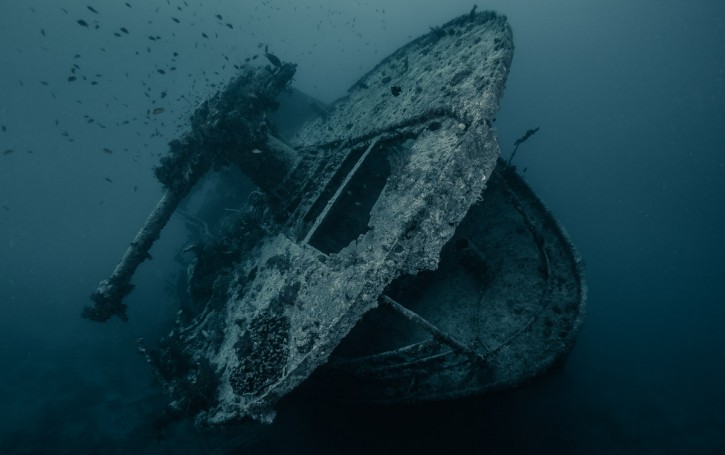
A shot at the stern, where I have been lucky enough to have no other divers in the scene, which if you’ve been to the Thistlegorm, you’ll realise is rare indeed. This is with only a tiny amount of flash lighting up the very closest part of the wreck.
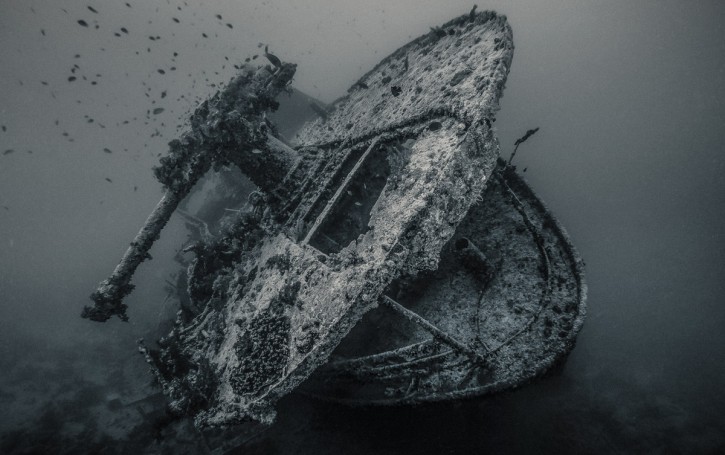
The black and white version of the stern shot of the Thistlegorm. It’s a matter of personal taste which one you prefer. Making black and white edits like this is a question I get asked a lot on our photo workshops.
The side on shot which is an unusual angle. I have given you the straight shot at the top with little or no editing, and then the more stylised black and white version below it:
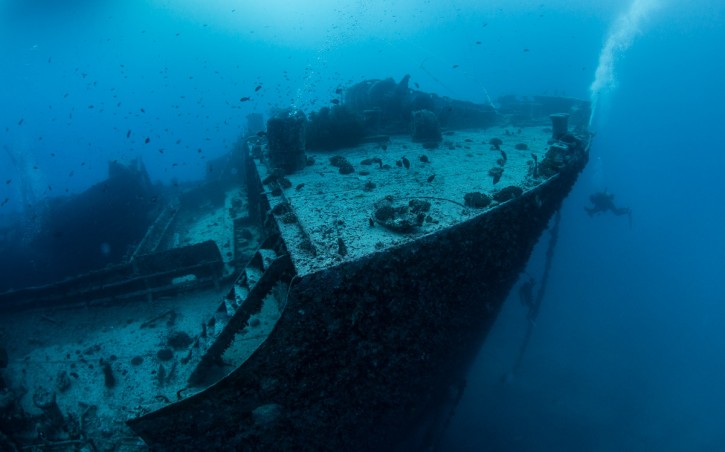
This is a rather untraditional viewpoint of the Thistlegorm, taken sideways on at the bow. The picture is a little soft at the edges because of the wide aperture I have had to use to gain a sufficiently fast shutter speed to hold the camera steady.
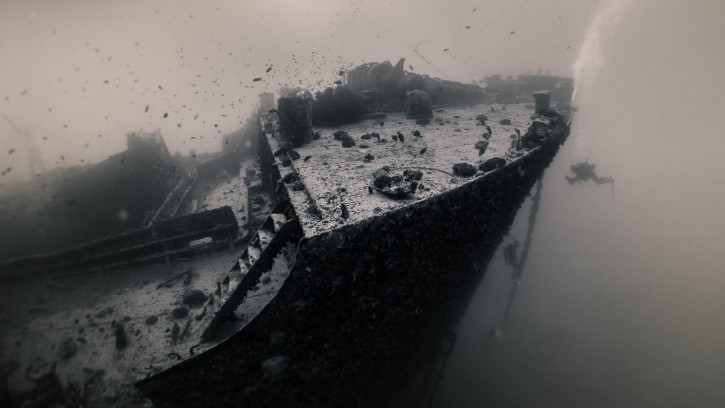
Because of the wide aperture I used which has softened the edges somewhat, I decided to opt for a black and white edit which actually highlights the softer edges to try and give it a dated and otherworldly feel.
Another alternative is to come on a dedicated wreck photography week where we will often dive the same wreck many times throughout the day to raise the chances of good lighting. I spend a lot of time on these trips teaching people how to edit their pictures, with black and white editing particularly popular.
I hope you’ve enjoyed this series on available light shooting. If you’d like to ask me any questions or talk about our photo trips please drop me a line at duxy@scubatravel.com.
[hr style=”single”]
 Duxy is the in house photo-pro for UK-based dive tour operator Scuba Travel. To find out about availability on Scuba Travel’s underwater photography workshops hosted by Duxy click here.
Duxy is the in house photo-pro for UK-based dive tour operator Scuba Travel. To find out about availability on Scuba Travel’s underwater photography workshops hosted by Duxy click here.
Blogs
Diver Discovering Whale Skeletons Beneath Ice Judged World’s Best Underwater Photograph
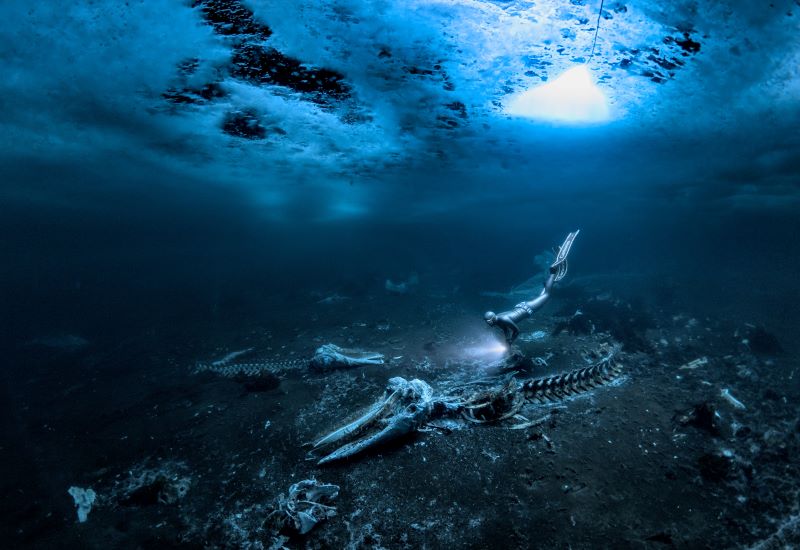
An emotive photograph showing a freediver examining the aftermath of whaling sees
Alex Dawson from Sweden named Underwater Photographer of the Year 2024. Dawson’s
photograph ‘Whale Bones’ triumphed over 6500 underwater pictures entered by underwater
photographers from around the world.
“Whale Bones was photographed in the toughest conditions,” explains chair of judging
panel Alex Mustard, “as a breath-hold diver descends below the Greenland ice sheet to bear
witness to the carcasses. The composition invites us to consider our impact on the great
creatures of this planet. Since the rise of humans, wild animals have declined by 85%. Today,
just 4% of mammals are wildlife, the remaining 96% are humans and our livestock. Our way
needs to change to find a balance with nature.”
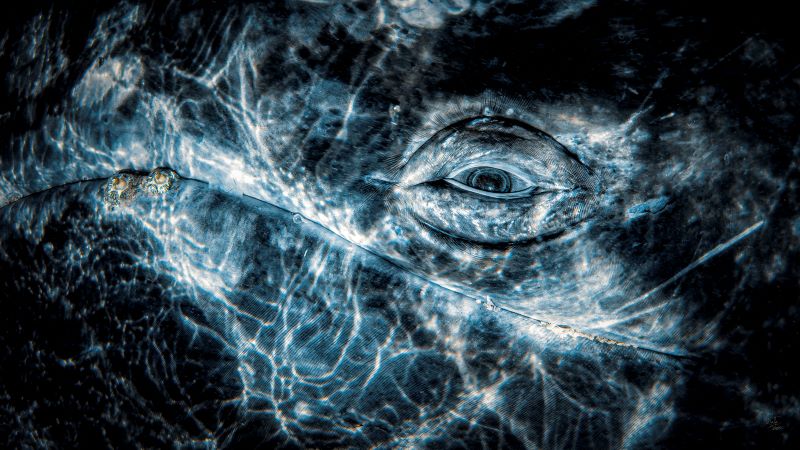
Photo: Rafael
Fernandez Caballero
Whales dominated the winning pictures this year with Spanish photographer Rafael
Fernandez Caballero winning two categories with his revealing photos of these ocean giants:
a close up of a grey whale’s eye and an action shot of a Bryde’s whale engulfing an entire bait
ball, both taken in Magdalena Bay, Baja California, Mexico. Fernandez Caballero took ‘Grey
Whale Connection’ while drifting in a small boat, holding his camera over the side in the water
to photograph the curious whale. ‘The End Of A Baitball’ required Fernandez Caballero to dive
down and be in exactly the right place at the moment the whale lunged. “The photo shows
the high speed attack,” he said, “with the whale engulfing hundreds of kilograms of sardines
in one bite — simply unforgettable to see predation on such a scale.”
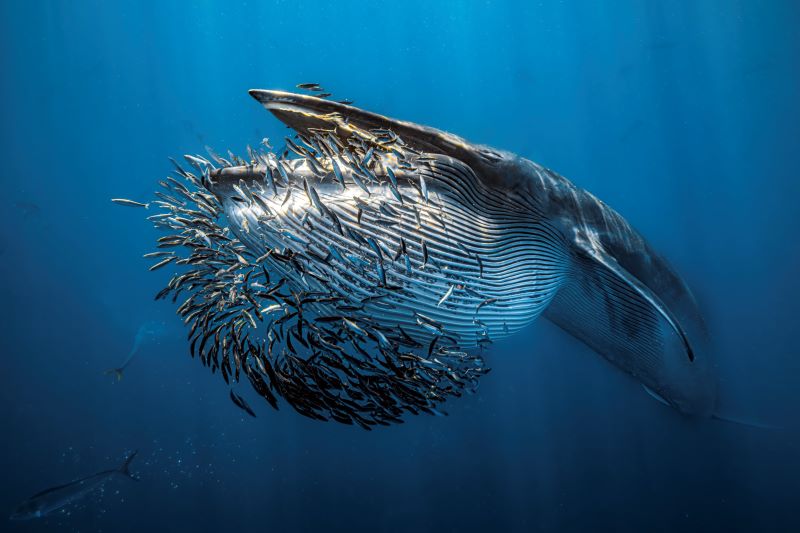
Photo: Rafael
Fernandez Caballero
Lisa Stengel from the United States was named Up & Coming Underwater Photographer of the Year 2024 for her image of a mahi-mahi catching a sardine, in Mexico. Stengel used both a very fast shutter speed and her hearing to catch the moment. “If you listen there’s an enormous amount of sound in the ocean,” she explained. “The action was too fast to see, so I honed in on the sound of the attacks with my camera to capture this special moment.”
“It is such an exciting time in underwater photography because photographers are capturing such amazing new images, by visiting new locations and using the latest cameras,”
commented judge Alex Mustard. “Until this year I’d hardly ever see a photo of a mahi mahi,
now Lisa has photographed one hunting, action that plays out in the blink of an eye.”
The Underwater Photographer of the Year contest is based in the UK, and Jenny Stock,
was named as British Underwater Photographer of the Year 2024 for her image “Star
Attraction”, which finds beauty in species of British wildlife that are often overlooked.
Exploring the west coast of Scotland, Stock explained “in the dark green depths my torch
picked out the vivid colours of a living carpet of thousands of brittle stars, each with a
different pattern. I was happily snapping away, when I spotted this purple sea urchin and I
got really excited.”
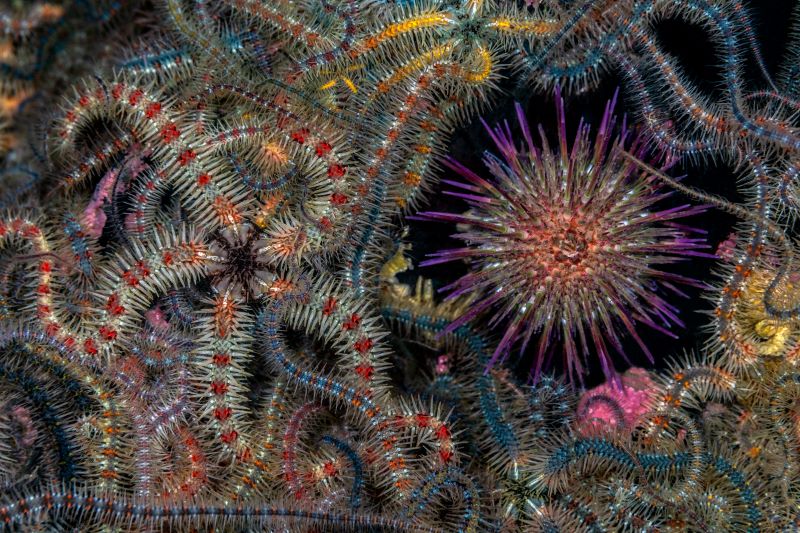
Photo: Jenny Stock
In the same contest, Portuguese photographer, Nuno Sá, was named ‘Save Our Seas
Foundation’ Marine Conservation Photographer of the Year 2024, with his photo ‘Saving
Goliath’, taken in Portugal. Sá’s photo shows beachgoers trying to save a stranded sperm
whale. The picture gives us hope that people do care and want to help the oceans, but also
warns us that bigger changes are needed. “The whale had been struck by a ship and its fate
was sealed,” explains Sá. “An estimated 20,000 whales are killed every year, and many more
injured, after being struck by ships-and few people even realise that it happens.”
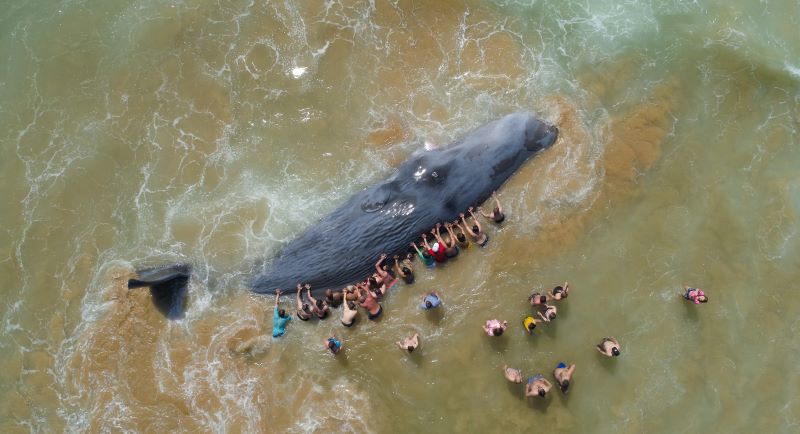
Photo: Nuno Sá
More winning images can be found at www.underwaterphotographeroftheyear.com.
About Underwater Photographer of the Year
Underwater Photographer of the Year is an annual competition, based in the UK, that celebrates photography beneath the surface of the ocean, lakes, rivers and even swimming pools, and attracts entries from all around the world. The contest has 13 categories, testing photographers with themes such as Macro, Wide Angle, Behaviour and Wreck photography, as well as four categories for photos taken specifically in British waters. The winners were announced in an award ceremony in Mayfair, London, hosted by The Crown Estate. This year’s UPY judges were experienced underwater photographers Peter Rowlands, Tobias Friedrich and Dr Alexander Mustard MBE.
Header image: Underwater Photographer of the Year 2024 winner Alex Dawson
News
World’s Best Underwater Photographers Unveil Breathtaking Images at World Shootout 2023
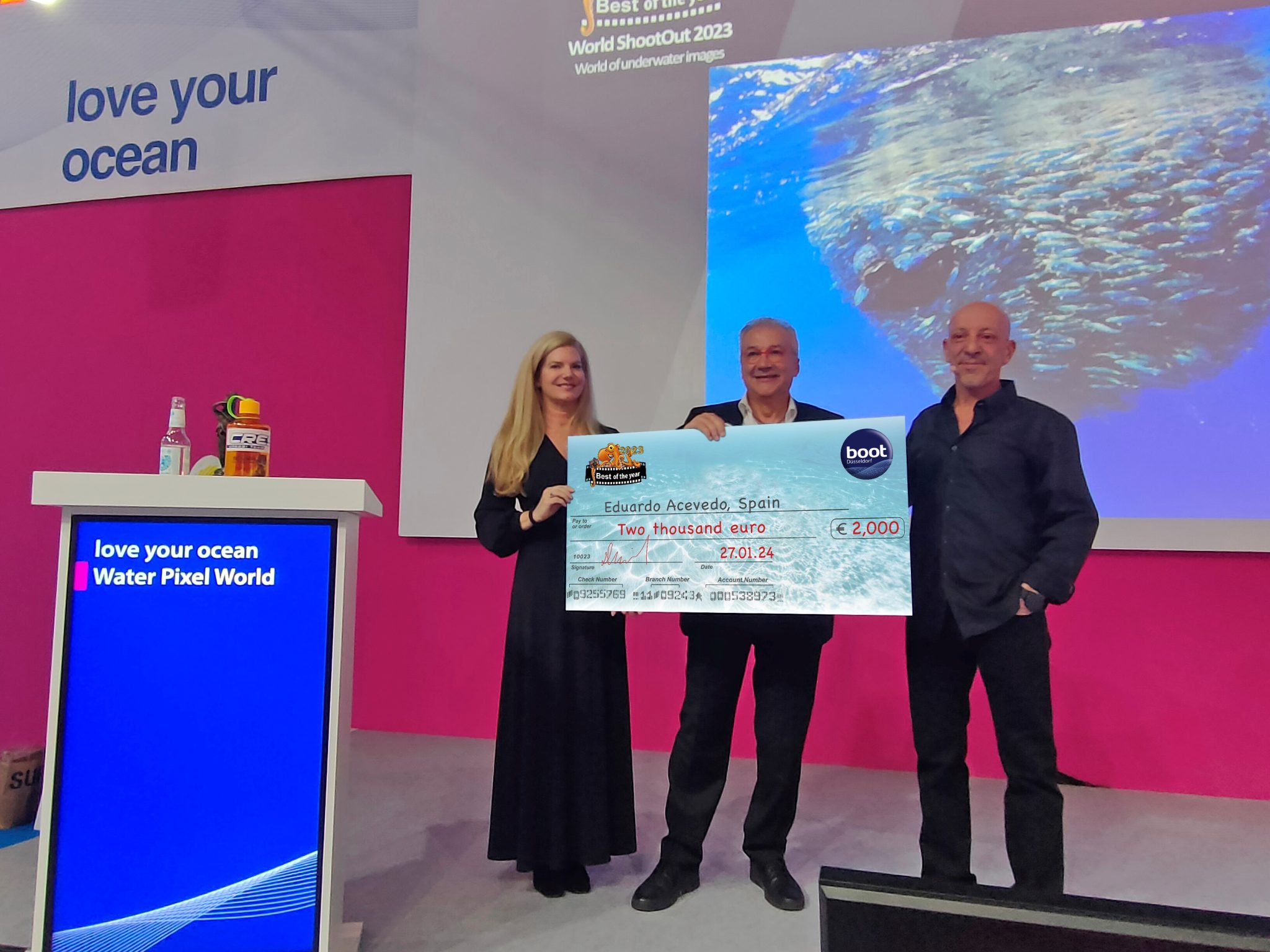
The winners of the prestigious World Shootout 2023 underwater photography competition were announced at this year’s BOOT Show, captivating audiences at the world’s largest diving and water sports exhibition in Dusseldorf, Germany. Hundreds of photographers from 54 countries competed across nine categories, pushing the boundaries of creativity and technical skill.
Grand Prize Winners
- Picture of the Year: Spanish photographer Eduardo Acevedo “secured” the top Honor with the prestigious prize the “boot Dusseldorf Director’s Prize, earning an Andromeda statuette and a €2,000 cash prize.
- Best 5 Images Portfolio: Luc Rooman from Belgium triumphed in this category, winning a dream 4-week diving trip for two to Papua New Guinea, valued at $18,900.
- Amateur Photographer: Alexandra Ceurvorst from the USA impressed the judges with her talent, taking home the 1,000 € cash prize award.
Celebrating Diversity and Innovation
This year’s competition saw 11,680 entries from 964 photographers, showcasing a remarkable spectrum of skills and perspectives. From the intricate wonders of Macro photography to the beauty of “Black Water”, the “Underwater Fashion” category added a touch of artistry and innovation, while the ever-important ” Environmental & Conservation” category served as a powerful reminder of the need to protect these fragile ecosystems.
Looking Ahead: AI and Ocean Conservation
World Shootout founder and producer David Pilosof unveiled an exciting addition for the 2024 competition: this year the Environmental category will be focusing on the impact of plastic on our oceans and future.
This category will embrace the potential of AI or other editing software as a tool to amplify the conservation message.
Entrants will submit campaigns of three original underwater photographs dealing with plastic pollution, along with their final AI assistance processing. This innovative approach encourages artistic expression while raising awareness about a critical environmental issue.
Explore the Stunning Collection
Discover the complete album of competition entries by clicking here.
For Low-resolution photos of finalist entries in eight categories, click here.
-

 News3 months ago
News3 months agoHone your underwater photography skills with Alphamarine Photography at Red Sea Diving Safari in March
-

 News2 months ago
News2 months agoCapturing Critters in Lembeh Underwater Photography Workshop 2024: Event Roundup
-

 Marine Life & Conservation Blogs2 months ago
Marine Life & Conservation Blogs2 months agoCreature Feature: Swell Sharks
-

 Blogs1 month ago
Blogs1 month agoMurex Resorts: Passport to Paradise!
-

 Blogs2 months ago
Blogs2 months agoDiver Discovering Whale Skeletons Beneath Ice Judged World’s Best Underwater Photograph
-

 Gear News3 months ago
Gear News3 months agoBare X-Mission Drysuit: Ideal for Both Technical and Recreational Divers
-

 Gear Reviews2 months ago
Gear Reviews2 months agoGear Review: Oceanic+ Dive Housing for iPhone
-
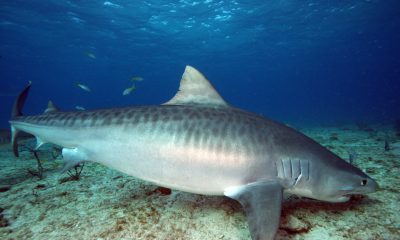
 Blogs3 months ago
Blogs3 months agoThe Thrilling Encounter with Tiger Sharks at Beqa Lagoon’s ‘The Colosseum’ with Coral Coast Divers


